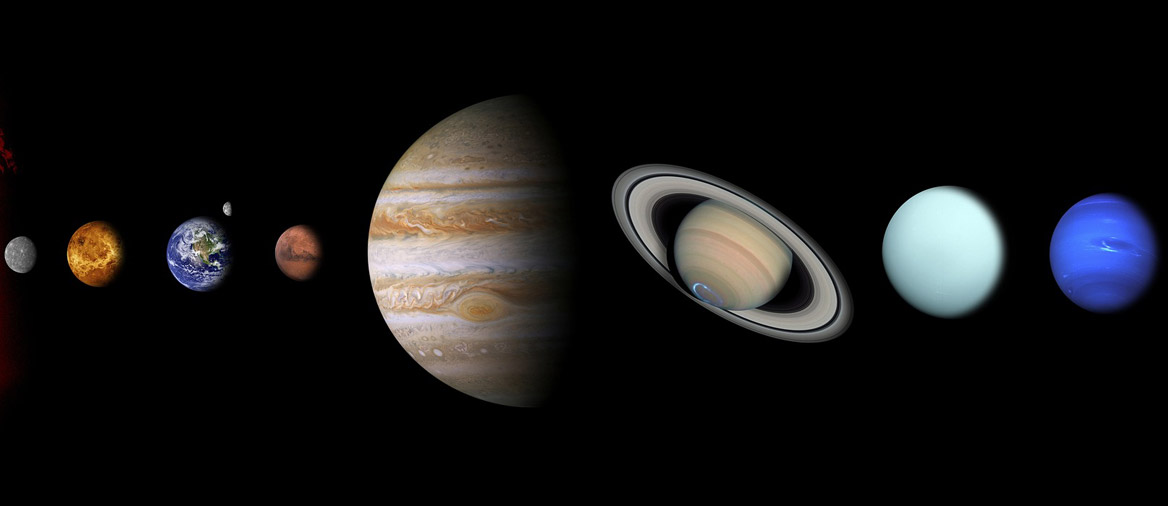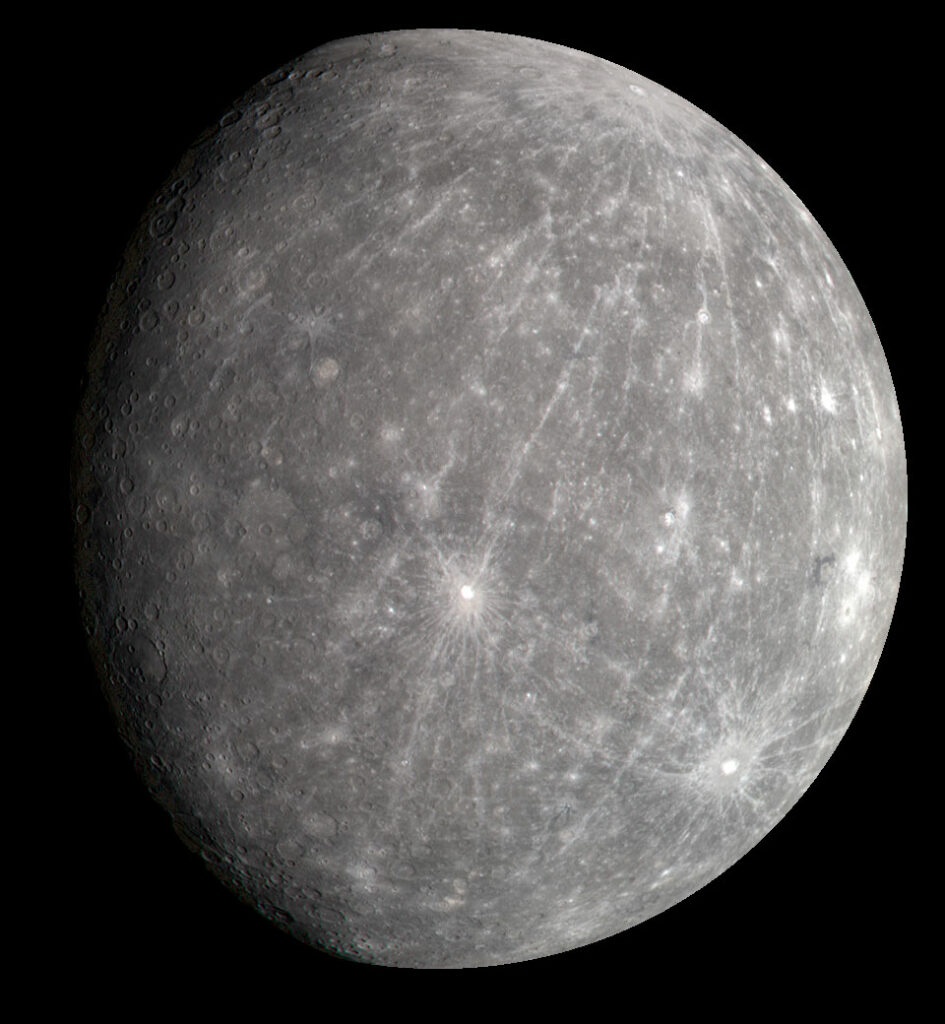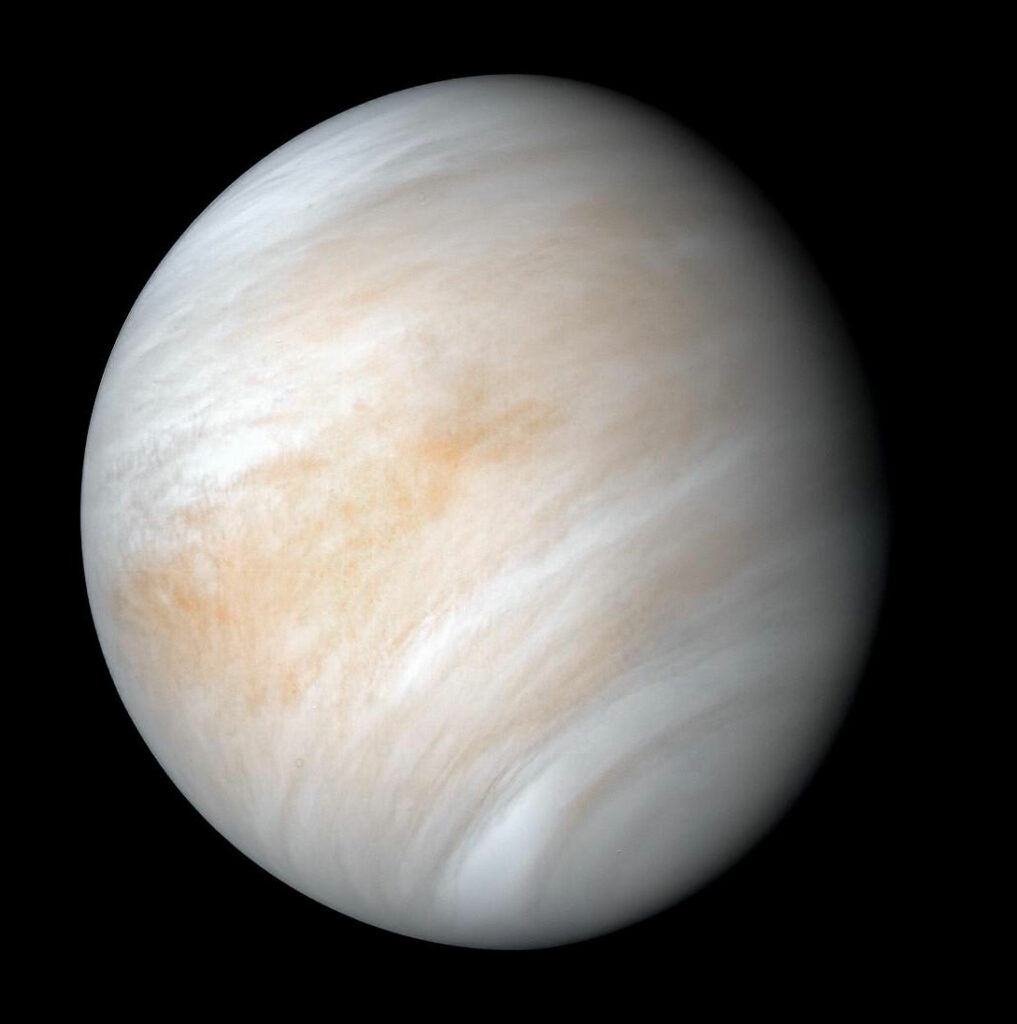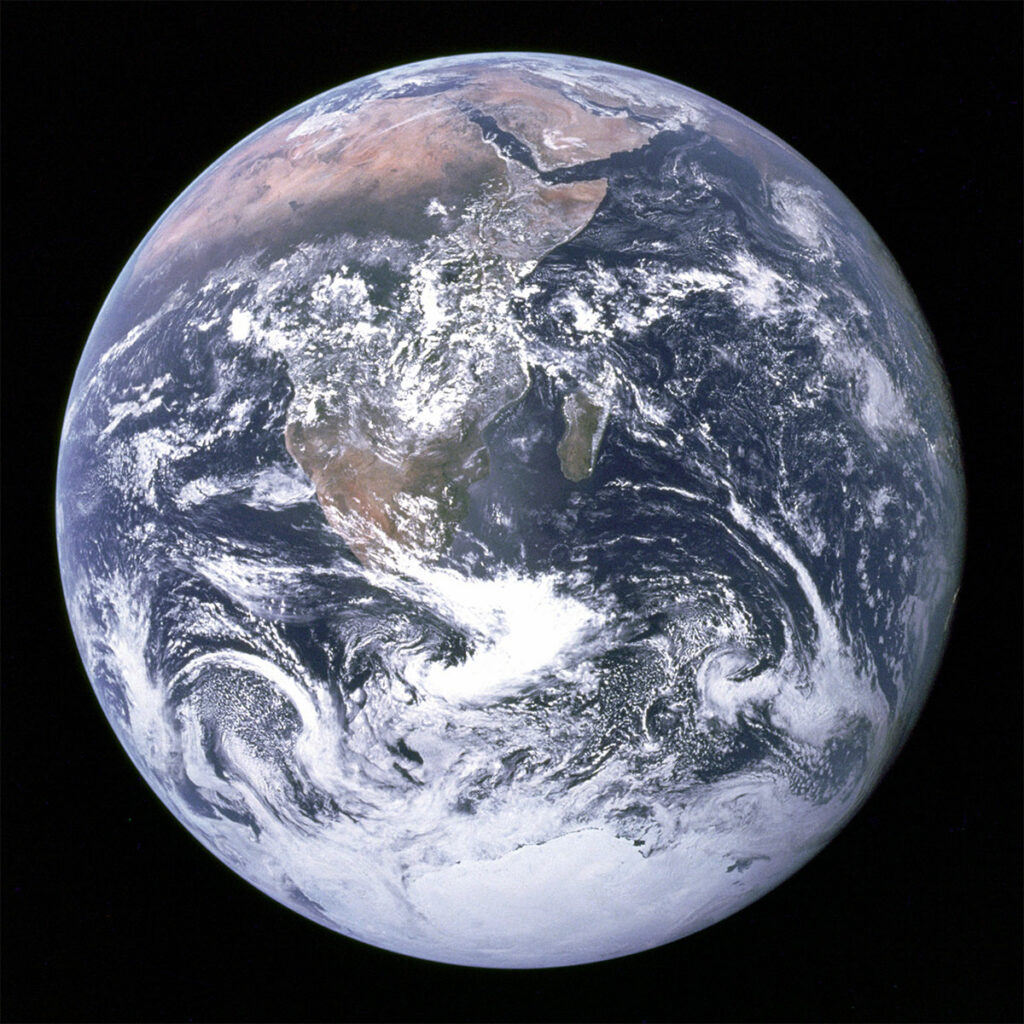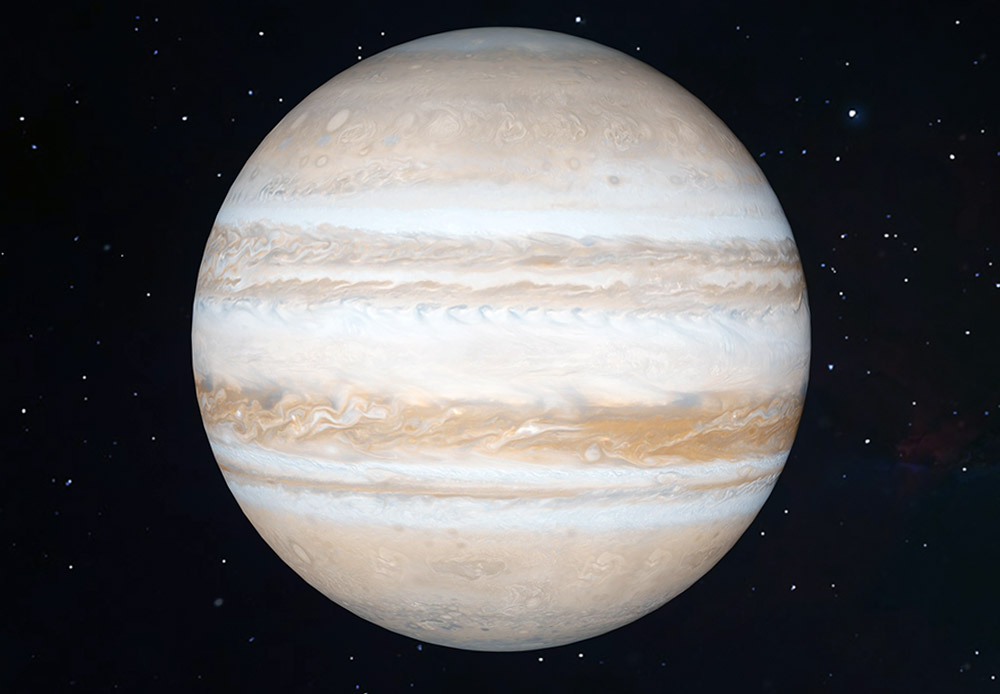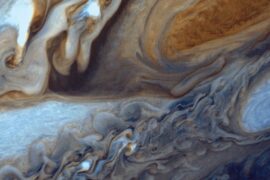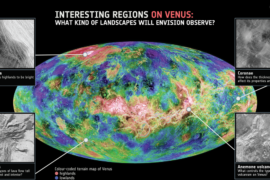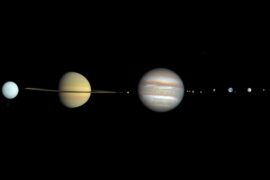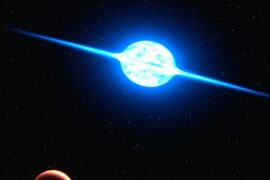All of the eight planets in the Solar System formed approximately 4.6 billion years ago. They all have more or less the same age. And even though they don’t look the same, they were made out of the same cloud of material. This is called a “protoplanetary disc” and it is like a pancake of dust and gas that is leftover after a star – in this case, the Sun – forms.
So here’s an interesting question. If all the planets developed at the same time and out of the same materials, how come they are so different? and how come they all have different colors?
When you look at the planets in the Solar system from space, they have these colors:
- Mercury: Grey
- Venus: Light yellow and white
- Earth: Blue, brown, and white
- Mars: Red, brown, and orange
- Jupiter: Stripes of light orange, white, brown, and dark orange
- Saturn: Stripes of yellow and brown
- Uranus: Light pale blue
- Neptune: Royal blue with other shades of blue
So why is there so much variety?
Well, there are several reasons for it that include how close each of them is to the Sun or how big their neighboring planets are. On top of that, the protoplanetary disc didn’t have all the elements spread equally. Some gases, for example, were more prevalent in the outer parts of the disc.
Finally, each planet evolved very differently over billions of years and this led their atmospheres and surfaces to have completely different colors than what they had when they originally formed. Earth and Venus are great examples of this.
Let’s take a look at each of the planets individually to go into more detail about their colors and how they got them.
Mercury’s color
Mercury is a dark grey color. It gets this color because the whole surface of the planet is mostly made out of rocks with high concentrations of carbon.
What we see from Earth or space is entirely its surface. While Mercury does have an atmosphere, it is very thin and it doesn’t have a particular color so it does not obstruct the view to the surface.
Mercury wasn’t able to develop a denser atmosphere or many features on its surface because it is too close to the Sun. (Related: 5 unique characteristics of Mercury)
Venus’ color
Here is where things start to get interesting in terms of the color of the planets.
When you look at it from Earth, Venus has hazy light-yellow and white colors. But what we see is not its surface. It’s just the thick clouds in its very dense atmosphere. The yellow clouds are the result of high concentrations of sulfuric acid. which often rains on the planets.
We have little information about the true color of the Venusian surface. In the 70s the Russian probe Venera 7 landed and was able to send an image before being crushed by the atmospheric pressure, or melting due to the high temperatures, or failing because of the acid rain…you get the idea. Venus is not a nice place to live in and it is hard to justify sending additional spacecraft to the planet because they would only be able to survive for a few seconds or minutes. Not worth the investment.
The image revealed a dark yellow surface, but you can’t fully trust it as Venus’s atmosphere blocks blue light and might block other colors so the rocky surface might look different under other conditions.
You might have also seen a photo of the “surface” of Venus that has bright orange, gold, and brown colors. This, unfortunately, isn’t a true color image. It was taken using ultraviolet data. Since our eyes can’t perceive those colors, scientists usually replace them with visible ones chosen sometimes arbitrarily.
Earth’s color
From space, Earth looks blue with some green tones. The continents are brown, and if you are close enough, you can see some of the clouds in white.
Earth looks blue from space because the water in the oceans reflects blue light. And since the oceans cover about 70% of the planet’s surface, then blue becomes the predominant color.
If you were to look at Earth from farther away (let’s say the orbit of Neptune) and you had a telescope powerful enough to see it, you would see the planet with much less detail and it would look just like a blue pearl.
Mars’ Color
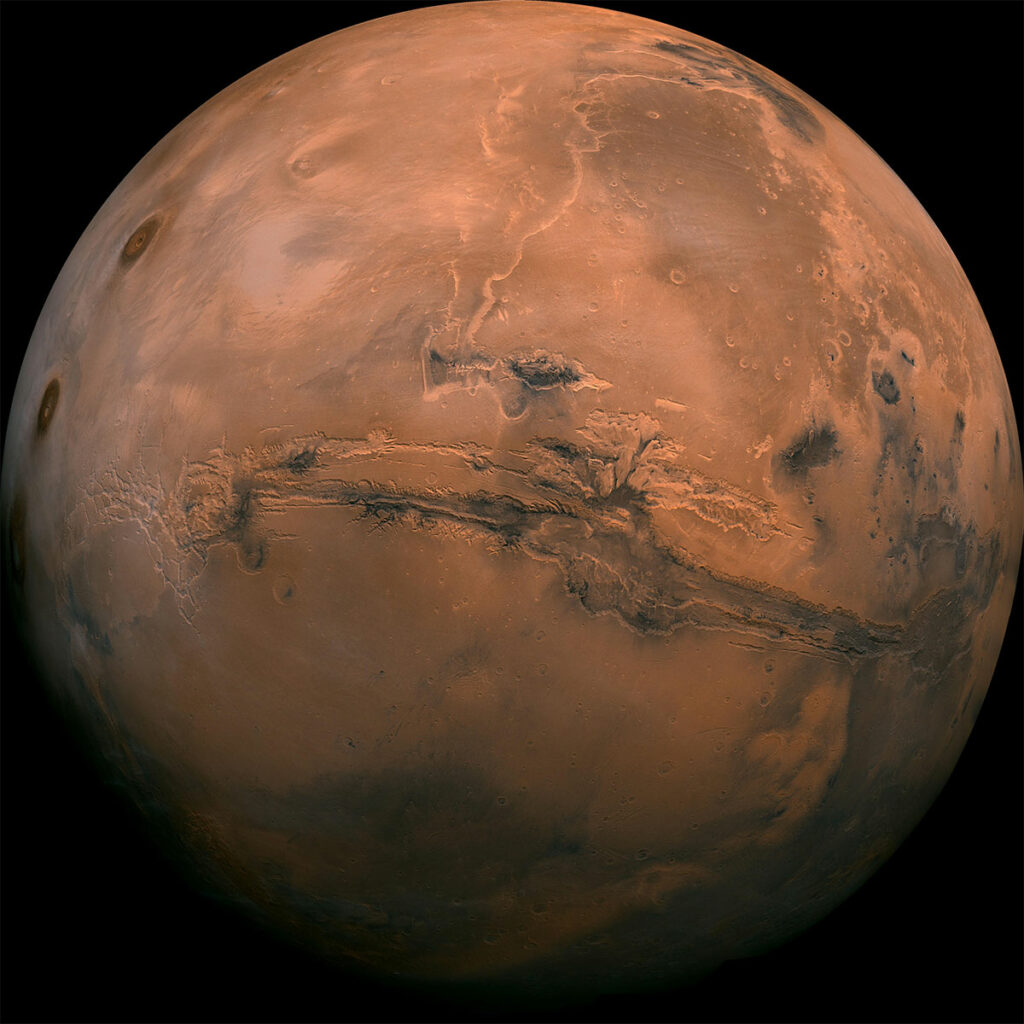
Like Mercury or Earth, when we look at Mars what we see is its surface.
The Martian surface is solid and mostly made out of rocks. But if it is just that, then why does it have red tones instead of gray or brown?
Well, the reason why Mars is red is that the rocks on its surface have a lot of iron in them. Over millions of years, these rocks have oxidized just like it happens to metals on Earth. This is how these rocks got their rusty, red, and brown coloration.
Mars has an atmosphere and it occasionally has clouds (although they are mostly made out of CO2) but they are thin and not visible at a distance. A couple of the Mars rovers have managed to snap some photos from the surface where these thin clouds can be observed.
Jupiter’s Color
After Mars, we get to the gas giants of the Solar system. Starting from Jupiter, the rest of the planets don’t have a solid surface and their exterior is mostly made out of various gases. If you were to drop into one of these planets, you would fall straight to the core and there would be nothing to stop you (assuming that you could survive the high atmospheric pressures, extreme winds, and deadly gases, of course).
The colors that we see in Jupiter are not a surface then. Instead, it is just the outer layers of its atmosphere. The swirly and stripe patterns are storms and clouds moving at very high speeds. Winds in Jupiter can reach speeds over 643 kilometers per hour (400 mph). The color of Jupiter changes as these winds move.
Jupiter has yellow, white, orange, and brown colors. These colors are created when the sunlight is reflected by Jupiter’s clouds that are made of hydrogen and helium but contain ammonia crystals, ammonium hydrosulfide, and a bit of ice.
Saturn’s color
Like Jupiter, Saturn is also a gas giant and the exterior that we can see from Earth is mostly clouds.
The yellow/light brown /white colors in Saturn’s exterior are the result of light bouncing on the clouds that are in Saturn’s atmosphere. These clouds are made up of hydrogen and helium for the most part, with some traces of ammonia, phosphine, and other elements.
The rings around Saturn also share some colors with the planet. Yellows, browns, and even some shades of pink, however, these colors are the result of the color of the little dust, rocks, and ice that make up the rings.
Uranus’ color
Uranus and Neptune are called ice giants or ice gas giants because well, they do have a lot of ice. But it is not necessarily the kind of ice you are thinking about and it is not the reason for the color of the planet.
The pale blue color of Uranus is the result of high concentrations of methane in the atmosphere. This methane reflects the blue/green color of the sunlight and is the reason why it looks a bit like a pearl.
The “ice” layer of Uranus is way way down the planet and it is not solid. It is more like swirly fluids composed of ice water, methane, and ammonia. Just like in Jupiter and Saturn, you wouldn’t be able to stand on Uranus. To learn more about this check out our article on what planets can humans walk on?
Neptune’s color
Neptune is the last planet in the Solar system, and as such, it receives very little sunlight. As a result, its average temperature is -373°F (-225°C). It is really, really cold, and it has a frozen layer, but once again, ice is not really the reason for its color.
Neptune has a royal blue color because the methane clouds in its atmosphere absorb most of the red and yellow light. What we see of Neptune from Earth is its atmosphere and the clouds in it moving rapidly. Neptune does not have a solid surface or oceans.
But if it is methane too the reason why Neptune gets its deep blue color, why is it a different shade of blue than Uranus? Well, that is because Uranus has an additional middle layer of whiteish clouds. The mix with the color of that layer is what makes the blue color of Uranus much paler.
Enjoyed this article?
Get daily 10-minute PDFs about astronomy to read before bed!
Sign up for our upcoming micro-learning service where you will learn something new about space and beyond every day while winding down.

